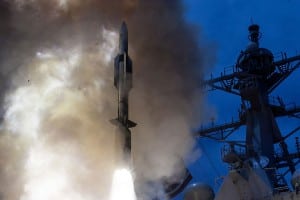
Lockheed Martin [LMT] has delivered the first Mid-Range Capability (MRC) prototype battery to the Army, which is the service’s new ground-based weapon designed to fire SM-6 and Tomahawk missiles. The MRC, also called the Typhon Weapon System, is an Army Rapid Capabilities and Critical Technologies Office (RCCTO) program that will be used to “hit targets in the range between the [future] Precision Strike Missile (PrSM) and the Long Range Hypersonic Weapon.” “The MRC rapidly progressed from a blank piece of…

 By
By 











